How Argentina defended their way through the knockout stage

Argentina conceded three goals in the group stages, and none in the knockout rounds. That alone doesn’t mean much of anything, but there was a palpable sense that Alejandro Sabella’s side had become more defensive as the tournament progressed.
So what gives?
In the first three group stage matches, Argentina’s shot counts were 12-16, 21-8, and 18-12 against Bosnia, Iran and Nigeria respectively. In the Round of 16, they outshot Switzerland 29-15.
However, things changed considerably against Belgium and the Netherlands, where the shots were 10-10 and 7-8. Argentina was shooting less, but also conceding less.
There are few possible explanations. The first is the introduction of Martin Demichelis in central defense beginning with the Belgium game, who replaced Federico Férnandez. That may have strengthened the Albiceleste’s back line. And injuries to Sergio Aguero and Angel Di Maria (the latter ahead of the Netherlands semifinal) didn’t help Argentina much up front.
Yet watching Argentina’s group stage matches, in addition to their Round of 16 game, one can see a marked difference in the back line, particularly in the discipline of the full backs in not running up to help out in attack.
Here for example is Argentina’s positioning for their goal conceded against Bosnia:
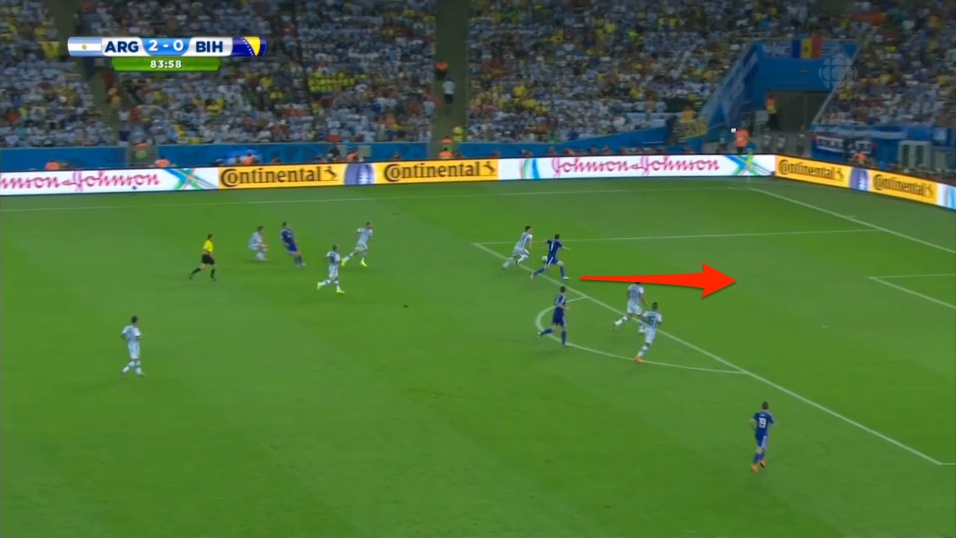
And their positioning for both goals conceded to Nigeria:
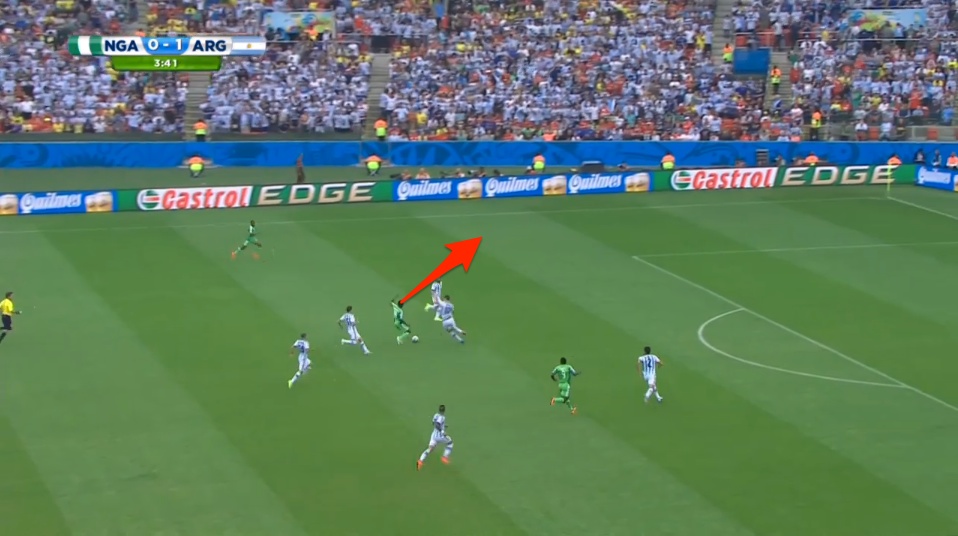

In all three cases, Argentina’s defence was tracking back from a higher position, affording space for the opposition sides on the counter.
Though Argentina didn’t concede against Switzerland, this may have been more a case of poor finishing from Ottmar Hitzfeld’s side than any defensive prowess (though the same could be said for Argentina). Here, for example, is Argentina’s backline shortly after the second half, which allowed Gökhan Inler to play a through-ball for Xherdan Shaqiri, who set up a chance for Josip Drmic, who shot over the bar.
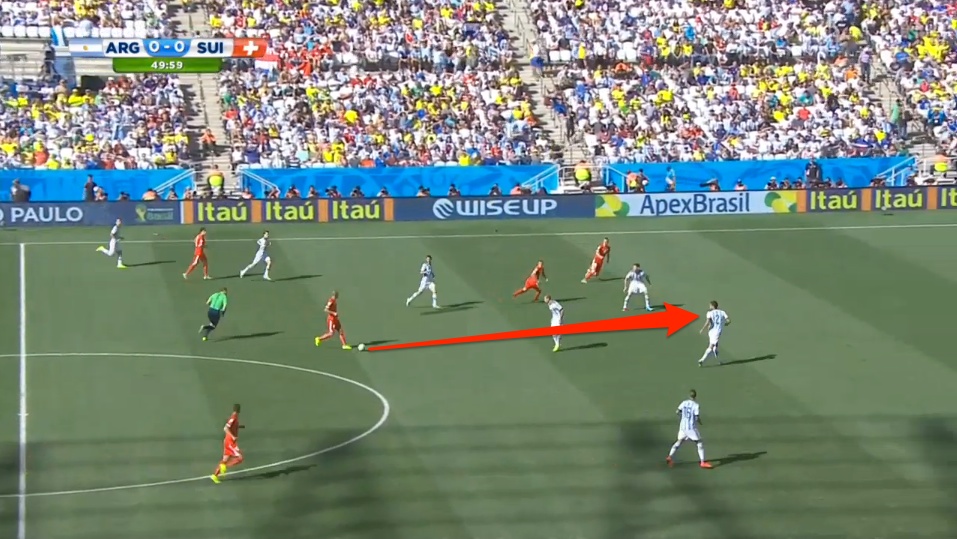
There are acres of space on Argentina’s right side.
Now we can compare this to the Belgium game, and it’s apparent from the get-go that Pablo Zabaleta is playing further back. The Belgium counter led by Kevin De Bruyne here, for example, runs up against a good Argentine line, with the Man City right back ready in front of Kevin Mirallas:
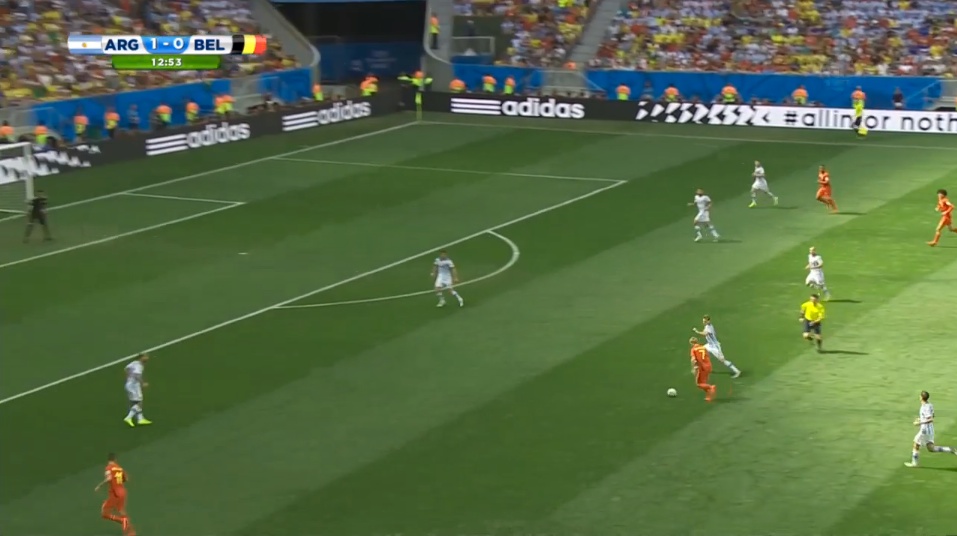
Though I’m generally not a fan of heat maps, we can see here the switch in Zabaleta’s general position from Switzerland to Belgium:
Against Switzerland:
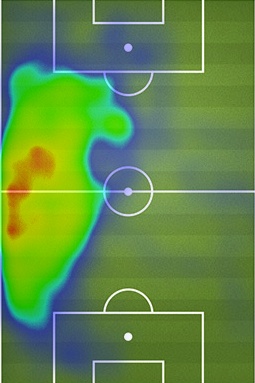
Against Belgium:
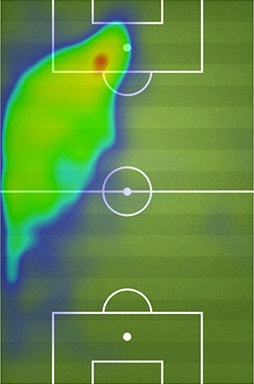
So why was Argentina vs. Netherlands so boring? Well, many reasons, not least the absence of Di Maria. But it’s clear here that Argentina would not risk pressing Holland higher up the pitch, and so Zabaleta generally stayed behind the halfway line.
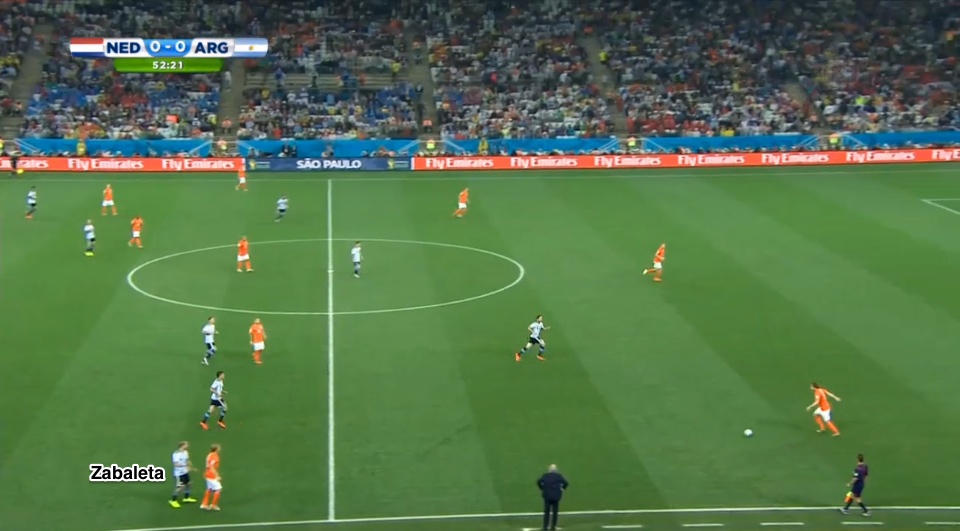
What they lost in attack, they gained in defense. Whether this will work against Germany remains to be seen, but Sabella may not want to risk everything in trying to shell for 120 minutes.
HEADLINES
- 2026 World Cup tracker: Who's qualified, how many spots are left?
- Infantino attending Trump's Middle East tour, will miss key FIFA meeting
- Trump: 2026 World Cup can be 'incentive' for Russia to end war
- Report: Brazil extends Ancelotti deadline amid impasse with Madrid
- Ex-USMNT coach Arena: Pochettino doesn't understand our 'culture'